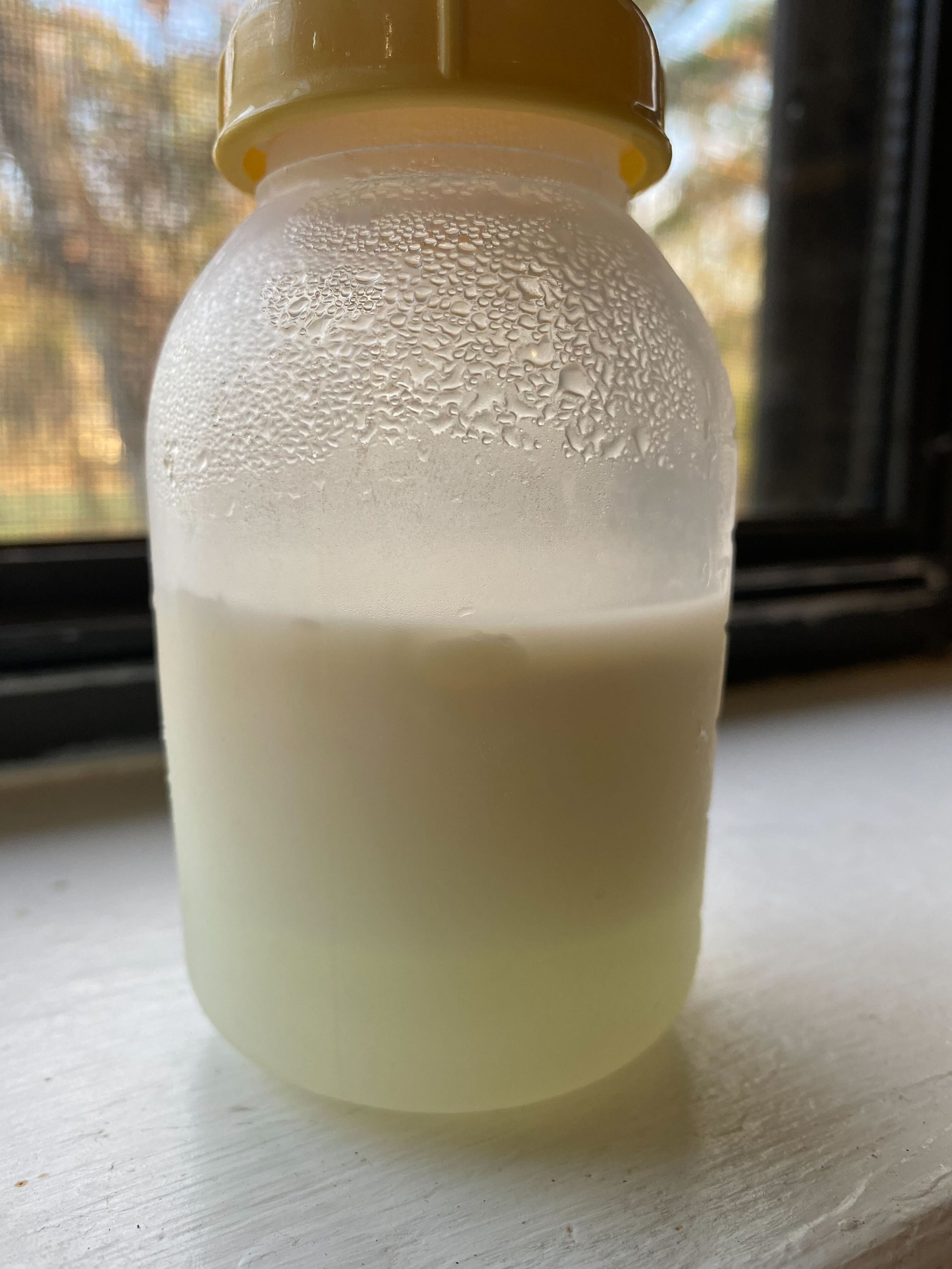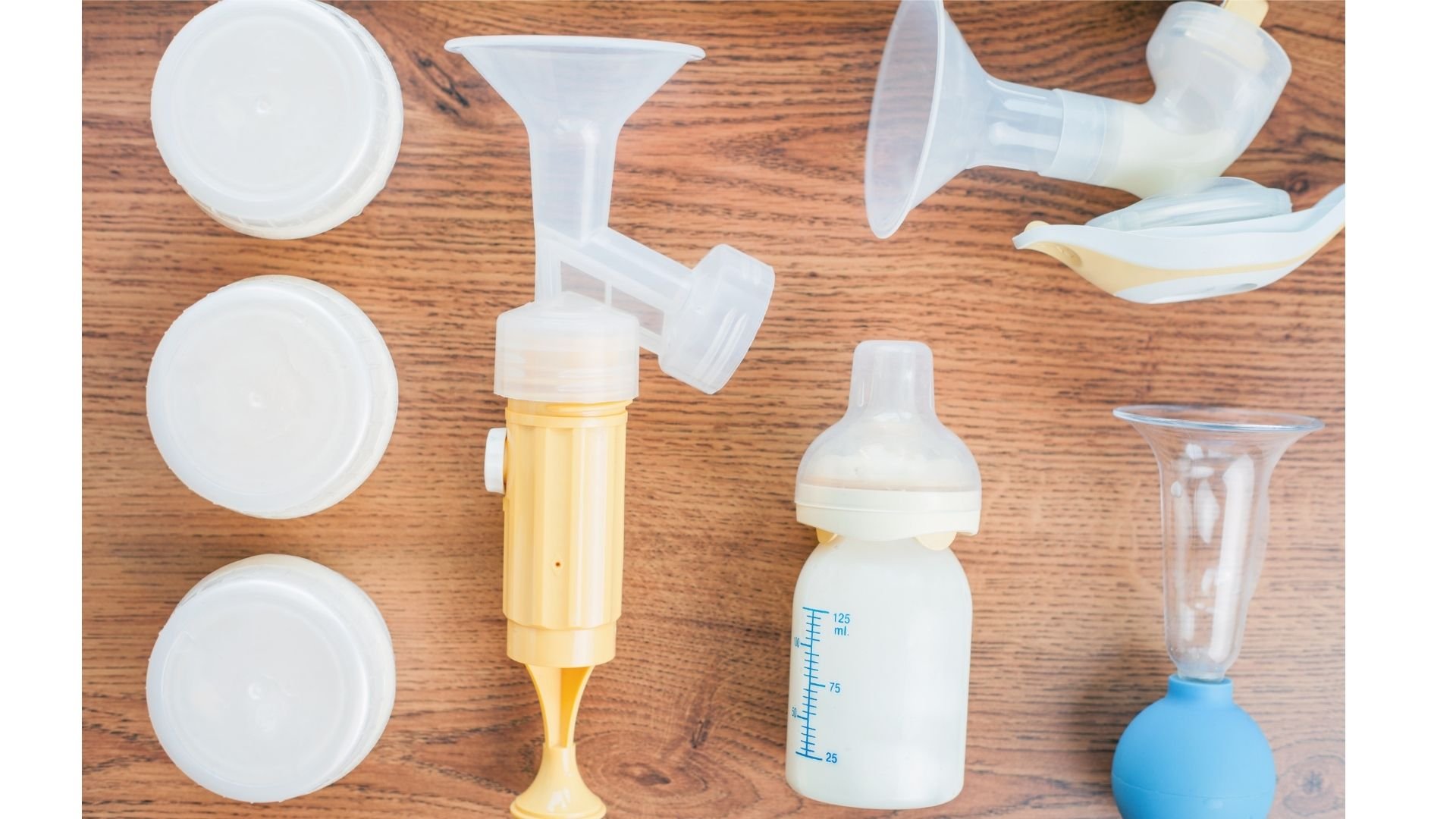Recent Articles
The Golden Hour
The first hour after birth when the mother has uninterrupted skin-to-skin contact with her newborn is termed the Golden Hour. Research has recently recognized the vital role that “The Golden Hour” plays in stimulating breast milk production and ultimately, breastfeeding success. Read on to learn more about the Golden Hour.
Foremilk vs Hindmilk
If you have ever left your pumped milk in the fridge overnight, you may have noticed the separation of the breastmilk. Rest assured, this is completely normal and expected. What you are seeing is the two types of milk that your body creates - foremilk and hindmilk.
Should You Breastfeed if You’re Sick?
Breastfeeding is hard work. Our days revolve around the last time we nursed/pumped, how long until the next breastfeeding/pumping session, and whether or not your baby has produced enough diapers that day. Then, when we least expect it, we wake up with a cough or catch a cold from our children. So, what do we do to protect our infant from illness?
How to Unclog a Milk Duct
Clogged milk ducts, while common, are uncomfortable and can quickly develop into mastitis. Most women (especially with their first baby) experience clogged ducts within the first six weeks after birth. Clogged ducts may also develop following missed nursing or pumping sessions, wearing constrictive bras, or when the infant begins sleeping for longer stretches. Read on to find out how to treat a clogged milk duct.
Cracked and Painful Nipples
Cracked and painful nipples are one of the most common reasons mothers prematurely stop breastfeeding. Many factors have been identified to cause painful or damaged nipples, including poor breastfeeding technique or latch, breast engorgement, inverted/malformed nipples, bottle feeding, nipple hypersensitivity, and inappropriate breast pumps. This article outlines some of the most effective ways to correct and resolve these issues.
Cleaning Your Breast Pump
Keeping your breast pump parts clean is as important as keeping your baby's pacifiers and bottles/nipples clean. While each breast pump is different and breaks down differently, cleaning & sanitizing is similar with each pump.
Increasing Milk Supply According to a Lactation Consultant
One of the most regularly asked questions that breastfeeding mothers ask is, “how do I increase my breast milk supply?" Many moms turn to the internet in search of the best product on the market as a quick fix to help stimulate and increase their supply. Hundreds of products are available at the click of a mouse, ranging from pills, smoothies, cookies, and teas. However, it is not always that easy.
The Most Important Breastfeeding Accessories
In this modern internet era, it is easy to get caught up in buying all the latest breastfeeding gadgets that supposedly make the process easier. While most of the accessories advertised on the market can be helpful, they are not always necessary. However, there are a few items that we consider essential. These items include a double electric pump (often covered by insurance), nursing bras, lanolin or nipple care cream, and storage bottles/milk bags. Read on to find out why these accessories can improve your breastfeeding outcomes.
Don't Give Up Breastfeeding Too Quickly!
Mothers typically have two versions of breastfeeding. On the one hand, they believe it's natural, and "breast is best," so it must be easy, which can lead to disappointments or unrealistic expectations. On the other hand, moms hear horror stories from friends and family about how difficult it was for them and quickly become discouraged. Because breastfeeding isn't always a fairytale story, determination and dedication are key.
Which Formula is Best for My Baby?
Sometimes, as much as we want to parent “by the book” as it were, life has other plans for us. Breastfeeding may be causing so much discomfort and stress, that in many ways, formula feeding is a better alternative. Some of us experience severe pain, cracked nipples, mastitis, or simply have to return to work and cannot find an extra thirty hours in our week to exclusively breastfeed/pump. Read on to find out about the most popular formulas on the market and the pros and cons of each.
Nipple Shields
Although nipple shields have proven helpful for many breastfeeding mothers, there is some contradictory data regarding the long-term effects of its use and the best method for weaning off the nipple shield and introducing the bare nipple. Read on to find out about the pros and cons of nipple shields.
Is It OK to Breastfeed and Formula Feed at the Same Time?
While many of us understand the benefits of breastfeeding, for some moms, exclusive breastfeeding is not always an option. In this day and age, many moms have to return to work within a few months of their baby’s birth, and being able to pump is non-negotiable. However, many moms experience difficulties with pumping and then don’t have enough milk to give to babysitters. Additionally, many moms struggle with issues such as getting their baby to latch, low milk supply, or nipple pain. For these and other reasons, the decision to supplement with formula becomes the only viable option.
When Is the Right Time to Stop Breastfeeding?
The decision to stop breastfeeding is a very personal one. Each mother has a different breastfeeding experience, and her emotions surrounding breastfeeding will be just as unique. Some mothers have a clear idea of how long they want to breastfeed, and when they would like to stop, but for many mothers, it is not that simple or obvious. While there’s no recommended cut-off time for breastfeeding, however long you choose to breastfeed will be beneficial to both you and your baby. There are many things to take into consideration when choosing to wean your baby off the breast, including your own beliefs and feelings, the feelings and needs of your child, and dare I say it, sometimes the unwelcome opinions of others.
Postpartum Loss of Hair
Postpartum hair loss is a fairly common phenomenon. It occurs in the first year after giving birth and usually peaks at around the four to six month mark. Hair loss is generally nothing to fret about, but you may want to take some measures to make your hair appear healthy and full. Eating a varied diet and taking vitamin-supplements, focusing on self-care activities, skipping the styling, and only shampooing when necessary can help prevent excessive loss of hair.
Postpartum Depression Action Plan
Postpartum hormonal changes and depression can make it extremely difficult to care for yourself or your baby. Affecting around 1 in 7 women after childbirth, postpartum depression is usually much more intense and persistent than the baby blues. The following lifestyle changes and self-care activities can help to relieve your symptoms.
Postpartum Depression Management
Postpartum depression is defined as “any major or minor depressive episode during pregnancy or in the first year after childbirth.” Around one in seven women will suffer from postpartum depression in their lifetime. This article discusses treatment options for postpartum depression.
Postpartum Depression
Postpartum blues due to hormonal changes are common after childbirth. These feelings arise because of a sharp drop in the pregnancy hormones and an increase in hormones that cause anxiety and depression. Severe and prolonged symptoms may be a sign of postpartum depression for which you should seek medical help.
Postpartum Hormonal Changes Explained
Postpartum blues due to hormonal changes are common after childbirth. These feelings arise because of a sharp drop in the pregnancy hormones and an increase in hormones that cause anxiety and depression. Severe and prolonged symptoms may be a sign of postpartum depression for which you should seek medical help.
Is Breastmilk Different on Each Side?
It is common to have one breast that is smaller than the other and which produces less milk. While this is nothing to fret about, it is possible to even out the milk supply of both breasts. This can be achieved by starting your breastfeeding sessions on the less productive side, nursing your baby on that breast more frequently, pumping that side more often, and taking steps to improve your let-down reflex.
Colostrum vs. Milk: What New Parents Need To Know
Colostrum is the yellowish milk you produce right after your baby is born. After about 3-4 days, colostrum transitions to mature breastmilk. Mature milk is similar to colostrum, but has a different balance of nutrition, is whiter in color, and is much greater in volume.





















